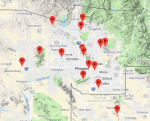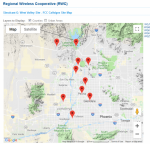The part you need to rename is the extension on the file. For PSREdit500, the default file extension is *.bin. So, if your file, from PSREdit500, was named Glendale.bin, you'd either change the file extension to *.txt (that's a text file, which is allowed on the forums), or zip (compress) the file as I noted previously. To attach your file, other than zipping it, you would change it from "Glendale.bin" (without the quote marks) to either Glendale.txt or Glendale.bin.txt. If you don't either zip it, or change the file extension name, then that's why you are getting the "file type not supported" error. You first save your file from PSREdit,
then change the file name. You can change the name by using Windows Explorer. Right-click on your saved file, and one of the options in the pop-up menu is "rename".
Note that programming files for your WS1040 are exactly the same as used for the PSR-600, PSR-500, Pro-106, Pro-197, WS1065, and a couple more.
The site you want for Glendale is the one that covers your area.
You can find those by using the database
page.
On the page, look at the heading just above the list of sites for the system.
View attachment 71991
You see where I highlighted
RR Locations?
Click on that.
That gets you a map, showing the location for each site. (For Simulcast sites, that balloon marker is roughly at the center of the simucast' coverage area.)
View attachment 71992
Click in one if the markers, and it will give you the name of the site it represents. The site just to the left of Glendale and Peoria is Simulcast G.
Back at the database page for the system, click on
Simulcast G.
View attachment 71993
That shows you the area that the site is designed to cover. As you can see, it's centered just west of Glendale.
If you want to look more closely at the site locations (for the actual towers). click on that small icon (highlighted) just off the lower left corner of the map.
View attachment 71994
Read the Wiki page on
Simulcast for a more complete description. What happens is that all these tansmit sites are using the same frequencies, transmitting the same thing from each one. Those signals arive at your scanner with just enough time differential to confuse the scanner to the point that it cannot decode the transmissions. But that can be unpredictable. Sometimes, you may have no problem at all. Or maybe you do, but your buddy nearby does not. In some cases, you can improve your reception by using a smaller antenna (at times, a paperclip works better). Or maybe, if you move yuor scanner a few feet in one direction or another, you can get better reception. You won't know if you have a problem until the scanner is correctly programmed.





